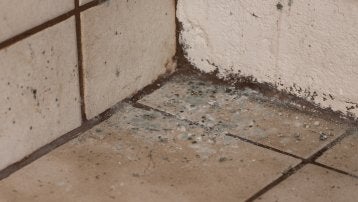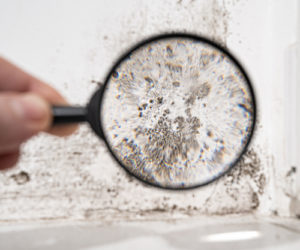Effective Article Mold Remediation Solutions for Your Home
Mold development in homes can be a relentless problem, typically calling for a methodical approach for efficient post-remediation solutions. From recognizing the aspects that add to mold advancement to carrying out correct cleaning techniques and moisture control actions, the procedure can be elaborate yet critical for preserving a healthy and balanced living environment. In addition, exploring natural remediation options and establishing a regular for recurring maintenance are essential parts of an extensive mold and mildew remediation method. As home owners aim to address mold and mildew problems, locating the most efficient options comes to be extremely important for the wellness of their homes.
Comprehending Mold And Mildew Development Variables
The primary aspect adding to mold growth is dampness. Mold and mildew spores require wetness to grow and germinate, making moist or moist atmospheres very vulnerable to mold invasions.

Furthermore, airflow and light exposure can affect mold and mildew development. Locations that do not have correct ventilation and all-natural light are a lot more susceptible to mold and mildew development. By attending to these variables adequately, people can effectively mitigate mold and mildew development and guard their living environments.
Proper Mold And Mildew Cleansing Techniques
Making use of reliable cleansing techniques is necessary in protecting against the reappearance and resolving of mold contamination in indoor settings. The very first step in proper mold cleansing is to have the damaged location to prevent the spread of spores to uncontaminated locations.

Carrying Out Wetness Control Measures
To effectively stop mold growth and contamination in interior atmospheres, executing moisture control actions is extremely important. Moisture is the key element that gas mold and mildew growth, making it important to take care of moisture degrees within the home. One efficient measure is to use dehumidifiers to maintain indoor humidity degrees below 60%. Additionally, making certain proper ventilation in locations prone to moisture buildup, such as cooking areas and shower rooms, can assist minimize the danger of mold development. On a regular basis inspecting and fixing any kind of leakages in plumbing, roof coverings, or windows is additionally crucial in stopping excess wetness buildup. Utilizing exhaust followers while cooking or bathing, and enabling air circulation by maintaining furniture a little far from wall surfaces can assist in wetness control. Making use of moisture-resistant materials in high-humidity areas, such as mold-resistant drywall and paints, can be useful. By carefully executing these moisture control measures, house owners can efficiently minimize the chance of mold recontamination and preserve a healthy and balanced indoor setting.
Using Natural Remediation Solutions
After efficiently applying dampness control procedures to stop mold development in indoor environments, house owners can currently check out the efficiency of all-natural removal services in preserving a healthy home. All-natural removal options use ecologically friendly techniques to fight mold and mildew and mildew, making them a preferred selection for those seeking safe options. One such service is utilizing vinegar, a natural antimicrobial representative, to tidy and disinfect surface areas polluted by mold and mildew. Merely thin down vinegar why not try here with water and spray it onto the affected areas, permitting it to rest for a few hours prior to wiping clean. In addition, tea tree oil, known for its antifungal residential properties, can be combined with water and sprayed onto mold-infested surfaces to inhibit further growth. One more all-natural choice is hydrogen peroxide, which can properly eliminate mold on different surfaces without leaving damaging residues behind. By integrating these natural remediation options into their cleaning routines, home owners can efficiently deal with mold and mildew development while advertising a much healthier interior environment for themselves and their households.

Maintaining a Mold-Free Setting
Frequently checking areas vulnerable to mold and mildew growth, such as bathrooms, attic rooms, basements, and cooking areas, is important. Proper ventilation in locations with high moisture levels is likewise key to protecting against mold and mildew growth.
In addition, preserving tidiness in the home is essential for mold and mildew avoidance. On a regular basis cleansing and dusting surface areas, carpetings, and furniture can help eliminate mold spores before they have an opportunity to resolve and multiply. Using mold-resistant products for construction materials and furnishings can further aid in creating a mold-free setting. Lastly, keeping indoor plants look at this web-site in check and making sure correct drain in exterior landscaping can lessen dampness build-up, decreasing the likelihood of mold and mildew problems. By following these aggressive maintenance practices, property owners can properly support a mold-free living room.
Conclusion
In verdict, it is necessary to deal with mold and mildew development variables, utilize correct cleaning techniques, carry out moisture control steps, use natural remediation remedies, and keep a mold-free environment in order to effectively take care of article mold and mildew removal in your house - Post Remediation verification. By following these techniques, you can avoid mold and mildew from reoccuring and ensure a healthy and balanced living environment for you and your family
The key element adding to mold and mildew development is dampness. Mold and mildew spores require moisture to germinate and prosper, making damp or moist settings very at risk to mold more and mildew invasions.To successfully avoid mold growth and contamination in indoor environments, implementing moisture control measures is vital. In addition, making sure correct air flow in areas prone to moisture build-up, such as restrooms and cooking areas, can help lower the threat of mold and mildew growth.After efficiently implementing moisture control measures to stop mold and mildew growth in indoor atmospheres, property owners can now explore the efficiency of all-natural remediation remedies in preserving a healthy living area.